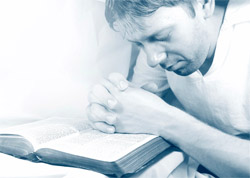CBN Film’s documentary, “Written in Stone: Secrets of the Temple”
Secrets of the Temple
Solomon’s Temple was destroyed by Nebuchadnezzar in 586 BC. 70 years later, the Temple was rebuilt by Jewish exiles returning from Babylon. Over the next 400 years, the Temple would be desecrated by the Greeks and Romans. Then, rededicated by the Maccabees. Then around 20 BC it was dismantled and rebuilt on a grand scale by one of history’s greatest builders: Herod the Great.
Today, the Temple Mount in Jerusalem is the most disputed piece of land on earth. The site is under Islamic rule and excavation is not permitted. So, archaeologists have been exploring areas around the site and have unearthed some amazing discoveries, like:
- An altar, dated around 2,000 BC, used for animal sacrifices was found just south of the Temple Mount, with a place to tie up the animals, and an olive press to make anointing oil.
- For centuries, a small, murky pool was identified as the Pool of Siloam. The Byzantines even built a small church to commemorate the site, but archaeologists were not convinced this was a legitimate location. In 2004, archaeologist Eli Shukron supervised repairs when a pipe burst nearby. Then, what Shukron discovered was a large, rock-cut pool with several steps. According to the Gospel of John, this was the spot where Jesus healed a blind man by putting mud on his eyes. Now, that the real Pool of Siloam was discovered, they wondered where people walked to get from the pool to the Temple. That’s when they discovered an ancient road.
- Herodian/Pilgrimage Road: This ancient road that is underground is almost 2,000 years old but was first discovered in 1894, by members of the Palestine Exploration Fund. However, they reburied it when the excavation was finished. In 2013, excavators revisited the site uncovering a 350-meter section. It was originally known as the “Herodian Road”, but a recent discovery puts the construction around the time of Jesus’ ministry, more than three decades after Herod’s death. This is in fact the pilgrimage road where Jews walked to the Temple. Like millions of other Jewish pilgrims, Jesus would have walked up these steps when he went to the Temple. At the top, he would have entered the gates to the Temple, named after the Old Testament prophetess Huldah.
- Huldah gates: Once a visitor passed through the gates, they would find a sign, with a Greek inscription warning Gentiles not to enter. These signs are mentioned by Josephus and read: “No foreigner is to enter the barriers surrounding the sanctuary. He who is caught will have himself to blame for his death which will follow.”
- Excavators also found a cache of more than 100 coins dating between 31 and 40 AD which means that the road was probably built by Pontius Pilate, the governor of Judea at the time. In the first century, the road was above ground and archaeologists call it the “Times Square” of Jerusalem with busy markets on either side. Today, the road is several feet beneath an Arab neighborhood called Silwan, the Arabic name for “Siloam.”
- Under the road, archaeologists also discovered a drainage channel that turned out to be a treasure trove.
Several amazing discoveries were made:
- One of those discoveries was a silver half-shekel from the time of Jesus. During the time of the Temple, every Jewish person was required annually to bring to the Temple what's known as a Temple tax. It didn't matter whether you were rich or poor. Every Jewish person was obligated to bring a silver half-shekel for the upkeep of the temple.
- Another discovery is a small golden bell. When the high priest officiated, he wore a blue garment with fringe work. There were also golden bells that hung upon the fringes, and pomegranates intermixed among them.
- “To the House of the Trumpeter” stone: That stone would have been at the very top of the Temple Mount complex, by one of the corners. It says on it, "Lebeit hatekiya," to the trumpeter's house. 2,000-plus years ago, it was a bustling marketplace. You would find a priest standing atop the Temple Mount on the eve of the Sabbaths or festivals blowing a trumpet, telling the shoppers down below, "It's time to close the stalls, time to make your last-minute purchases and go home, and get ready to observe the Sabbath.”
- Foundation Stones: When Herod was expanding the Second Temple, along with the Temple Mount, he built monumental support or retaining walls to support the massive structure that would sit atop the Temple Mount. And these stones are actually below the surface. They're foundation stones and no one has seen them since they were laid some 2,000 years ago. This spot in the Herodian/Pilgrimage road is believed to be the closest point to the Holy of Holies where the Ark of the Covenant once rested. Just to the north is the Dome of the Rock where Jews believe the Foundation Stone marks the location of the Holy of Holies. And since they’re not allowed to pray on the Temple Mount, they pray here instead.
- Cedar & Cypress beams: Archaeologists took advantage of a natural disaster in 1927 when a powerful earthquake rattled the city of Jerusalem. Workers uncovered beams made from cedar and cypress which had clearly been reused several times throughout history. Carbon-14 dating revealed that one cypress beam was from the first century. The beam has column markings similar to the measurements of the columns in Herod’s Royal Stoa suggesting that it may have originally been used in the Second Temple. Other beams were even older, dating as far back as the 9th century BC, around the time of King Solomon who, according to the Bible, used cypress and cedar to build the First Temple.
- Temple Mount Sifting Project: Since archaeologists are forbidden to dig on the Temple Mount itself, they’re doing the next best thing: Digging through its trash. In November of 1999, some bulldozers appeared on the Temple Mount at the place which is the most delicate place for archeology where even a toothbrush would be too large a tool to carry out an excavation. In that place, bulldozers began to dig a gigantic pit. About 400 truckloads saturated with the history of the Temple Mount were removed from the Temple Mount, and the earth of these 400 truckloads was dumped into the Kidron Valley about 500 meters east of the Temple Mount. Working with a colleague, archaeologist Gabriel Barkay retrieved the debris from the Kidron Valley and started sifting through it with a team of volunteers. This was the beginning of what’s now known as the Temple Mount Sifting Project that is still taking place today. Many of their finds go back to the First Temple.
- Among them are Babylonian arrowheads from Nebuchadnezzar’s army.
- A clay seal impression from the family of “Immer”-A priestly family mentioned in Jeremiah 20:1* which refers to the son of Immer as “the chief governor in the house of the Lord.”
- They also found an ancient weight known as the “beka” used to measure the silver Temple tax. The beka, found in soil from the Western Wall area, was mentioned in the book of Exodus: “One Beka per head, that is half a shekel, for each one who goes through the counting” or census.
- But perhaps one of the Sifting Project’s most remarkable finds is a cache of 600 stone floor tiles from the Second Temple. At least 100 of them date definitively to the time of King Herod. These would have been the tiles that Jesus walked on when He overturned the tables of the moneychangers.
- Magdala Stone: A hundred miles north of Jerusalem on the shores of the Sea of Galilee archaeologists found a 2000-year-old table-like stone with a picture of the Holy of Holies on it. The stone was likely used to hold Torah scrolls. But the table itself had a larger purpose: To provide a visual reminder of the Jewish Temple in Jerusalem.
- Magdala Synagogue: Further excavations revealed that the stone sat inside a synagogue. The spiritual center of a first-century fishing village. The place some believe to be the home of one of Jesus’ followers, Mary Magdalene. With Roman frescoes and mosaics, Magdala boasts the most ornate synagogue in the Galilee region. Inside, excavators found first-century pottery fragments and a coin of Herod Antipas from the year AD 29. They also found 12 coins between the years 3-58 AD, and they are now absolutely certain that the synagogue was existing in the first part of the first century right up to 68 AD. Proving that this synagogue was operational during the lifetime of Jesus and during the generation after Pentecost.
Written in Stone
In 1867, a British engineer and archaeologist named Charles Warren arrived in Jerusalem to uncover the biblical history of the Holy Land. Since then, thousands of archaeological discoveries throughout the Middle East have confirmed the history of the Bible.
Hosted by CBN’s Gordon Robertson, Written in Stone: Secrets of the Temple takes you on a visual journey through the Bible. In addition to providing archaeological evidence of biblical stories, you will also see the beautiful land of the Bible.
The purpose of creating this series was to use archaeology to prove that we can trust the Bible as an accurate historical source. The facts of the Bible like history, archaeology, the names of people and places are all accurate. In more than 150 years of biblical archaeology, not one thing has ever been discovered that disproved the Bible. If its historical facts can be trusted, we can also trust the rest of what’s written.






